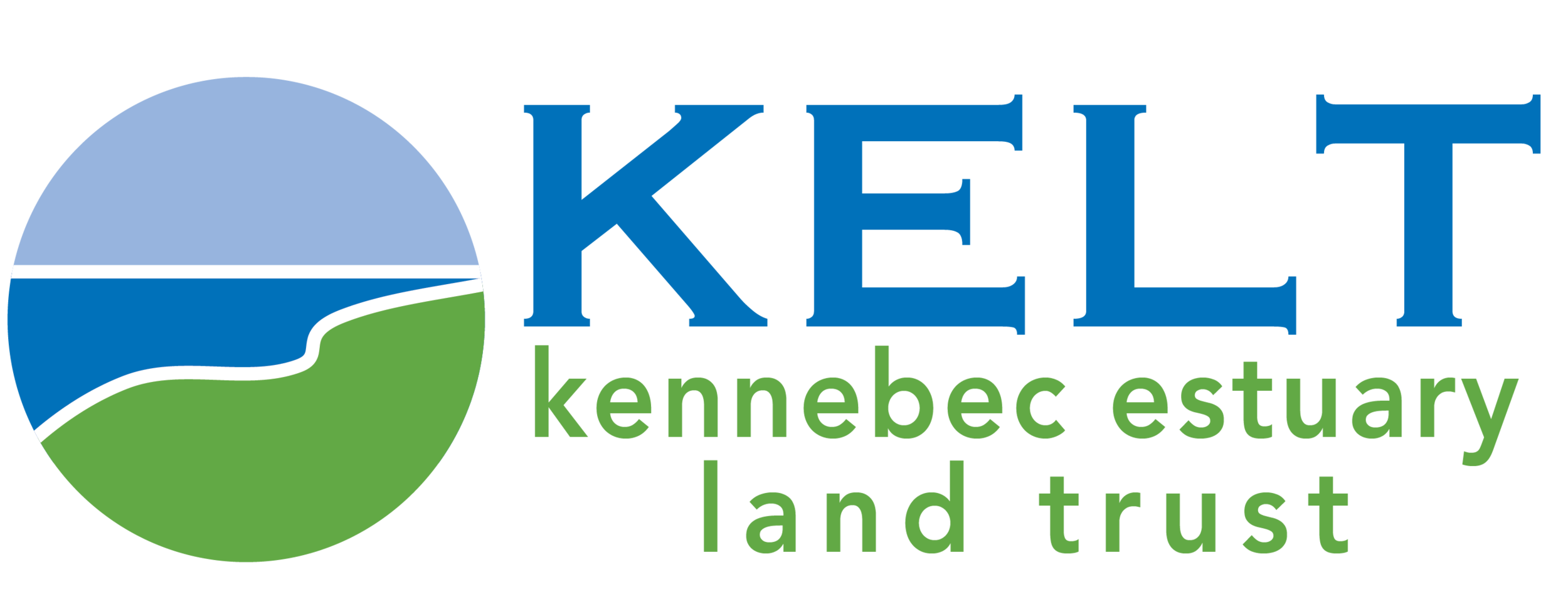In the Field with Eliza: Center Point and the Case of the Harmful Honeysuckle
My time as KELT’s Summer Preserve Steward has brought me on adventures far and wide, but no place has kept me coming back like KELT’s Center Point Preserve in Bowdoinham.
View of Center Point from Brick Island
The road leading to Center Point eventually opens up to a field, dotted with mature oak and birch trees and a towering thicket of sumac. Surrounded by the Merrymeeting Bay on three sides, the field feels calm and serene but to the trained eye of KELT’s Preserves Manager, Dillon Mulhern, it is anything but.
Walking to Center Point.
During my first visit to Center Point, Dillon and I meandered through the field as he pointed out various populations of invasive plants. Morrow’s honeysuckle, autumn olive, Japanese barberry, and bittersweet vine thrive in the open canopy of the field.
A consequence of globalization, invasive species of plants and animals are a common problem all over the world. Invasive species have no natural predators in their introduced ranges, so they can spread quickly, outcompeting the native species for space, nutrients, and sunlight. This skews the natural balance of an area and has the potential to damage native plant communities, wildlife, and even change the soil itself!
In the field at Center Point, these plants, especially Morrow’s honeysuckle, have taken advantage of the open field and grown to impressive sizes. Since honeysuckle is adapted to a different climate and seasons, it is one of the first plants to leaf out in the spring and one of the last to drop its leaves in the fall, remaining green for much longer than most native plants. This early development of dense canopies shades native understory plants, allowing honeysuckle to dominate areas which it has spread to.
“KELT’s plan for the field involves allowing native trees to come up naturally, eventually creating a denser woodland, matching the surrounding landscape. To let these young trees take hold, the invasive honeysuckle shrubs needed to be taken down a peg. ”
Morrow’s Honeysuckle
Japanese Barberry
KELT’s plan for the field involves allowing native trees to come up naturally, eventually creating a denser woodland, matching the surrounding landscape. To let these young trees take hold, the invasive honeysuckle shrubs needed to be taken down a peg.
To accomplish this, myself and KELT’s Bowdoin Fellow, Connor Hovendon, headed out to Center Point on a sunny June morning, looking to hand pull some of the younger shrubs on the outside of the infestations. The honeysuckle bushes were dressed in a beautiful display of spindly flowers, ranging in color from bright white to soft yellow. This was the prime time to “control” this plant, as once the flowers turn to fruit, the honeysuckle has successfully gone to seed. Preventing these plants from going to seed reduces the potential volume of the seed bank, helping to control the spread of the plant to other areas of the preserve.
Morrow’s Honeysuckle flowers. PC: Donald Cameron. Copyright © 2023 Donald Cameron.
Using these small flowers to guide my sights, I found a patch of young shrubs and got to work. Right away it was obvious that this species had made its way all the way from Asia and was not going to go without a fight. The woody stems were firmly rooted into the ground, connected to a root system often longer than the aboveground portion of the plant. But with a mighty pull or two, shrub after shrub were soon freed from the ground. To prevent these sneaky plants from re-rooting when no one is looking, they were hung in the low branches of trees, with roots stretching for the sky. Thanks to the addictive feeling of success, we tackled the largest plants we could muscle out of the ground. Covered with bug bites and scratches, Connor and I looked upon what we had accomplished. More plentiful than the uprooted honeysuckle hanging in trees, was the not uprooted honeysuckle. Every time I turned my head there was more- hiding under a patch of sumac, behind an oak, blending in with raspberries and grasses. Exhausted, Connor and I took more and more frequent breaks, realizing the incredible amount of work that would have to go into this project.
It was on this fateful day that I gained a newfound respect for this work and the people who do it. It isn’t easy, requiring plenty of physical and mental strength. But the days exertion was more than worth it- by pulling these young shrubs we had reduced the potential size of the seed bank, dampening the ability of the species to spread to an even greater area of the preserve. With the hard work and dedication of the KELT staff and community, the native species at Center Point stand a chance to thrive in the understory once again.
Eliza spot treating invasive barberry.






